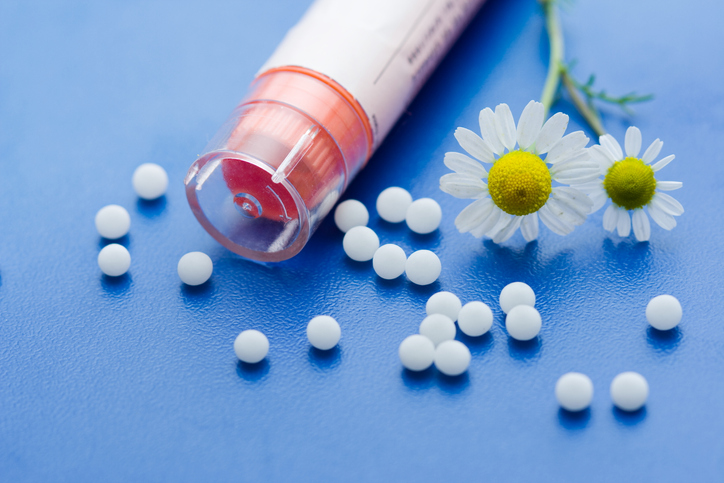In contrast to conventional medicine which are prescribed to inhibit or suppress a patient’s symptoms, homeopathic medicines are prescribed to mimic and augment the patient’s immune response and natural defences. As such, homeopathic treatments for hay fever aim to minimise or eliminate symptoms, optimise quality of life, and reduce the risk of developing a coexistent disease. Hay fever is a frequent reason to see a homeopath in the UK, especially when available conventional treatments aiming to reduce the intensity of symptoms do not always achieve clinically relevant reductions.
Although hay fever is prevalent throughout the world, it is predominantly found in socioeconomically developed countries, where the condition may affect as much as 25% of the population. People of all ages may be affected, but the onset of symptoms often begins during adolescence. Its prevalence has increased during the past twenty years despite falling pollen counts.
Hay fever during the summer months causes considerable discomfort and detrimentally affects quality of life- and that too at a time when one wants to be outdoors enjoying the weather. It often interferes with work productivity, sleeping habits, and general day-to-day and recreational activities. Hay fever has also been found to significantly affect psychological wellbeing and cognitive functioning. Other allergic problems such as asthma and eczema frequently coexist, adding to the impact of the condition.

The main cause of hay fever in Britain is grass pollen, particularly perennial rye and timothy grass. Typically, symptoms become worse during the relevant pollen season, and especially if one’s exposure to pollen is increased by spending time outdoors.
Hay fever symptoms peak during June and July. Symptoms in spring are commonly caused by tree pollen, whereas symptoms in late summer and autumn may be due to weed pollen and mould spores. Rape seed may also provoke symptoms of hay fever, although usually through the irritant rather than allergic mechanisms. It has been suggested that emissions of nitrogen dioxide and ozone from vehicle exhausts have also been causing an increase in sensitivities to airborne allergens.
Hay fever exhibits a cluster of symptoms that may affect multiple organs and systems. Symptoms typically consist of seasonal sneezing, nasal itching, nasal blockage, and watery nasal discharge. Eye symptoms including redness and itchiness are also common. Further, more serious symptoms may include seasonal coughing, wheezing and shortness of breath, in addition to systemic symptoms such as tiredness, fever, a pressure sensation in the head, and general itchiness.
Oral or topical antihistamines are the first line of treatment for hay fever in conventional medicine. However, for chronic cases which do not respond effectively to antihistamines, systemic corticosteroids can be prescribed. These treatments have mostly been used to manage the condition in the short term, as the symptoms usually return not long after they are discontinued.
Lately, a large number of hay fever patients are turning to complementary medical treatments, particularly homeopathy in the quest for a natural, gentle and permanent solution. From the homeopathic perspective, one of the great misunderstandings about allergies is the assumption that the allergen (e.g. the cat dander, pollen, or house dust mite) is “the problem”. In fact, the allergen is the trigger and the allergic person’s immune system is deficient. Rather than suppressing the person’s symptoms or avoiding allergen as a mean of staying healthy, a homeopath would seek to find the homeopathic remedy that would strengthen the individual’s defence system.
Each case of hay fever is unique, and a diligent homeopath would prescribe a remedy after careful consideration of the symptoms and causative factors. There is a range of homeopathic remedies that can be prescribed for hay fever, with the most common ones being discussed here.
Allium Cepa. The eyes burn, sting, swell and are sensitive to light. Tears are profuse but do not irritate the skin around the eyes. An important characteristic is that the nose and eyes stream with large amounts of watery discharge. The person sneezes frequently. Acrid nasal discharge burns, making the nose and upper lip sore. Post-nasal drainage makes the throat raw. The person is unusually thirsty. A headache often accompanies the allergies and may be felt in the back of the head or in the forehead at the sinus area. A cough associated with hay fever may get worse when cool air is inhaled.

Natrum Mur. A common symptom of this type of hay fever is excessive, watery nasal discharge (similar to the raw white of an egg). This thin discharge often lasts from one to three days, and then the nose may become stuffy, making breathing difficult. Sneezing is also common. The tongue has a frothy, bubbly coating, especially around the edges. Sometimes canker sores develop on the lips and the corners of the mouth. The mouth is dry, and frequent drinks of water are required. The patient often loses some sense of smell and taste. Sometimes, a hammering headache accompanies the symptoms, which are often worse in the morning from 9:00 to 11:00 AM. Symptoms improve after bathing in cool water. Perspiration also seems to relieve the symptoms.
Gelsemium. There is heavy sneezing and nasal discharge. The face is hot and the nose tingles and often has a burning discharge, especially in the morning. The mucus membranes are dry but the patient does not feel thirsty. The eyelids become heavy and can make it difficult for the patient to keep open. Common symptoms also include a dull headache and slight fever. The legs may ache, and a chill may run up and down the spine. Allergies are often worse in humid, foggy weather and can be aggravated by sudden emotions, bad news, and surprises. Hay fever symptoms tend to be worse in the summer and in the morning around 10:00 AM.
Arsenicum Alb. Asthma is often associated with this type of allergy. Mental agitation, anxiety, and restlessness occur. The eyes burn, and tears are hot and acrid, stinging the face and cheeks. Sneezing can be extreme. There may be tickle in one spot inside the nose that is not relieved by sneezing. Heavy mucus drainage from nose alternates with blockage of the nose. Nasal discharge is thin, watery and burning. The upper lip is irritated and raw from the discharge. There is thirst for warm drinks, which are sipped rather than gulped. Often, breathing is laboured. The person feels chilly and is intolerant of light. Warm applications to the face and nose, elevating the head, and wrapping the body seem to help the symptoms. Sitting up is often the best position. Wet weather, weather changes, and being by the ocean aggravate the symptoms.
Euphrasia. The eyes water constantly, causing itching and burning. Sometimes a sticky mucus on eyes can be removed by wiping them. Eye discharge is acrid, burning, and often thick. Nasal discharge is profuse and watery but does not irritate the nose or upper lip. A frontal headache may accompany nasal discharge. Frequent sneezing that gets worse at night is common. However, if a cough is present, it is actually better at night and worse during the day. Allergies are worse in the sunlight and the wind. Staying in a dark room is helpful.
Sabadilla. The most common symptom of this type of allergy is excessive sneezing with a runny nose. Severe frontal sinus pain is a common symptom. The eyes have a watery discharge, and there is intense itching in the nose. The roof of the mouth itches and is relieved by rubbing the tongue on it. The eyelids are hot, red, and burning- however, tears do not redden the skin around the eyes. Sometimes the person has difficulty hearing due to eustachian tube blockage. The mouth is dry, yet the person is not thirsty. There is general body chilliness and a sensitivity to cold air. Symptoms are worse from the odour of strong foods such garlic and onion. Allergies are relieved with warm food and drinks.
Nux Vomica. Prolonged sneezing spells occur, especially when first waking in the morning. Nasal discharge is runny during the day, but the nose is stuffy at night and outdoors, with each nostril being alternately affected. There is itching all the way from the throat to the larynx and trachea. Itching is also felt in eustachian tubes. The person is chilly and irritable and often stays up late at night due to the discomfort. The allergies can get worse after eating a meal, in the cool and open air, during a breeze or wind. The patient feels better when the nose begins to run. Symptoms are relieved during rest and napping, taking warm drinks, and exposure to moist air.

Bio: Haroon Ashraf is a homeopath based in London, where he offers in-person and online consultations. Haroon specialises in treating skin and gut conditions and allergies. Please visit his homeopathy practice at https://holistichomeopathy.co.uk/ for enquiries and appointments.
